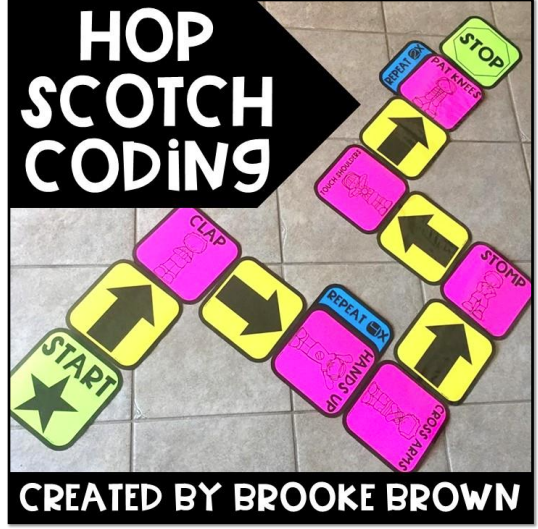Celebrate the Hour of Code
4 Min Read • Technology
Coding. Before I really knew much about it, I pictured it as programmers sitting behind individual computer screens, feverishly thinking and creating software and apps. Once I began to explore its possibilities in the classroom, I realized that that stereotype couldn’t be further from the truth. Not only is coding collaborative, but there are so many ways to have students move and interact while learning and even more ways to integrate it with the arts.
The Hour of Code is coming up soon: December 4 – 10, 2017. This is a great time to celebrate coding in the classroom, especially if it is your first time trying it. Your class can easily participate even if you have NO EXPERIENCE and NO TECHNOLOGY! Both are nice, but not at all necessary to give students a taste of computer science. Below, you’ll find some ideas for leading your class through some “unplugged” activities that can integrate dance, music, and visual arts, and engineering through a STEAM component.
Why teach coding?
While coding helps students excel in problem-solving, computation, the 4Cs, engineering, design, and many other areas, it could also give students a step towards their future success. Check out this statistic from Code.org, and more like it here: computer_science_advocacy.
What if I don’t even know what coding is? Lesson Plan Ideas
Many coding lessons are written for teachers with little to no computer science experience. I am quite fond of Code.org. This site was created by computer programmers who realized there were really no other resources out there to solve this gap. Teachers had no experience and there were no resources or curriculum for them to use. As a solution, they created code.org as an interactive curriculum that can reach students of all levels and abilities — from pre-readers to advanced high school students. Students can work their way through the lessons independently or with a partner, and with or without the support of a teacher. For teachers, it has the same learning options as for students but with additional ready-to-implement lesson plans designed to enhance the online curriculum and weave the lessons together.
What if I don’t have access to devices?
Go unplugged! “Unplugged” lessons are coding activities that don’t require any technology. Code.org offers many of these types of activities which have value even when standing along. This year, I stumbled across Brooke Brown’s Hopscotch Coding, which is a product at her Teachers Pay Teachers store, Teach Outside the Box. With Hopscotch Coding, students manipulate printed paper tiles the same way they would write code in block-style format. After they “program” the code (see photo), students follow the programming.

This activity is fantastic for so many reasons! First of all, the students are fully and actively engaged in building (programming) the code. In addition, you can swap out the pink movement tiles with other actions. For example, swap them for written rhythms, and students can practice clapping or saying the rhythm. Swap them for math facts, letter sounds, music notes with an instrument or sight words, and it gives students an extra opportunity to work on memorization. Swap them out for specific dance steps and students would be programming simple choreography for a dancer to follow. There are just so many possibilities, and the activity can be completed over and over at a variety of levels. You can also integrate the connection between loops and music notation as explained here. Find Brooke’s Hopscotch Coding here with everything you need to print it out and implement it today!
This also provides a great stepping stone to actual coding on a device. It most easily leads to a block-style coding, which students can do using a variety of apps and programs. It introduces coding as the action of telling a computer or robot what to do. Students can easily transfer this background knowledge when working with an Ozobot using markers and code or using the Ozobot Dance app, which includes dance styles such as the cha-cha.
How Else Can the Arts Play a Part?
One of the other things I love about Code.org is that many of their lessons or featured celebrities are artists or musicians, and they explain the connection between art, music, and coding. With many coding apps and websites, students can code works of art or create music. The following video clips are unplugged activities from Code.org to explain the connection between songwriting and functions as well as songwriting with parameters.
These lessons analyze the structure of a song to learn about defining and calling functions when coding. Find detailed lesson plans here.




